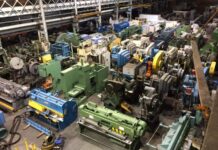Maintaining a flexible and scalable workforce is an essential business strategy in today’s rapidly changing economy. Regardless of industry, every company must be able to adjust its operational teams quickly and efficiently to meet rising demand for services. One area that requires this flexibility is human resources (HR), and many companies have shifted to staffing strategies that support a scalable workforce model.
A scalable workforce involves using freelancers, independent contractors, and temporary employees to fill in during peaks in productivity or during projects that require specialized skills. This type of labor practice allows businesses to scale up or down as needed, and it also helps businesses save money. For example, hiring temporary workers during the holiday season or for sales promotions can help reduce payroll costs and avoid paying overtime to permanent employees.
The benefits of maintaining a scalable workforce include improved productivity, increased morale, and employee loyalty. When you incorporate a scalable workforce into your company’s culture, your permanent employees will be less overwhelmed by work and can focus on their most important tasks. Additionally, hiring short-term employees to take on projects that don’t fall within the normal job description of your permanent team members will improve their morale and boost retention rates.
If you decide to implement a scalable workforce, it’s important to have senior-level buy-in. This is especially true if your current workforce consists of full-time, permanent employees. The transition to a scalable workforce can be difficult for some employees, and it’s important that you plan the transition carefully. Start by discussing the changes with your team leads and middle managers, and create a schedule for when you will implement new shifts in work patterns. It’s also a good idea to standardize procurement processes for freelancers, contractors, and seasonal team members. This will minimize duplication of efforts, reduce costs, and ensure that all team members are utilizing the most qualified talent available.
Another important component of a scalable workforce is an understanding of the different types of work styles that exist among your permanent and temporary team members. It’s a good idea to get to know the different personalities and motivations of your team members, so you can assign the right task to the most qualified person.
While a scalable workforce isn’t the ideal option for every business, it can be an effective tool to help your organization stay competitive and profitable in an ever-changing market. By adjusting your organizational structure and creating an environment that supports a more flexible workplace, you can attract the top freelancers, independent contractors, and temporary workers and retain them long-term.
Developing a scalable workforce takes time and effort, but it can pay off by improving productivity, morale, and employee loyalty. By implementing the right strategies, you can build a dynamic, flexible workforce that gives your company the agility it needs to thrive in a volatile economy.




